I am trying to detect the text from the images but fail due to some unknown reasons.
import pytesseract as pt
from PIL import Image
import re
image = Image.open('sample.jpg')
custom_config = r'--oem 3 --psm 7 outbase digits'
number = pt.image_to_string(image, config=custom_config)
print('Number: ', number)
Number: 0 50 100 200 250 # This is the output that I am getting.
Expected --> 0,0,0,0,0,1,0,8
